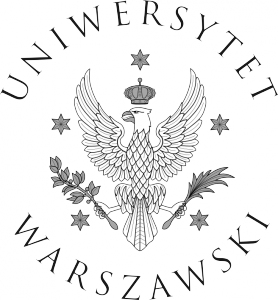Urban Agnieszka
Department of Organic Chemistry and Chemical Technology
Laboratory of Synthesis of Organic Nanomaterials and Biomolecules
Application of 1,3-dipolar cycloaddition in synthesis of promesogenic ligands for gold nanoparticles three dimensional reconfigurable assemblies
Agnieszka Urban
Supervisor: dr Michał Wójcik
Tutor: mgr Ewelina Tomczyk
Nanoparticles are structures in the range of 1-100 nm. They are characterized by a geometric structure that is defined by a high surface-to-volume ratio. The ratio is the larger the smaller the diameter of the particles. This causes a large increase in the activity of the nanoparticle form and affects the properties of absolution and reactivity. Metal nanoparticles are a group of nanomaterials that have very wide applications[1]. In case of applications, it is often necessary to stabilize or functionalize them. Modification of their surface helps to adapt their properties to various applications in nanotechnology. Nanoparticles can be protected by organic ligands and also organic ligands can introduce functionalities. An example is promesogenic ligands that give the spherical gold nanoparticles liquid crystal properties. They are characterized by a change in the position under the influence of temperature change, which is associated with a change in the spatial ordering of the functionalized nanoparticles themselves[2].
In this work, thermotropic systems composed of nanoparticles and liquid crystal ligands have been synthesized. The systems differ in the length of the carbon chain and the presence of a triazole ring. Ligands were obtained in copper(I)-catalyzed 1,3-dipolar cycloaddition reactions between azide and alkyne (CuAAC). By connecting the spacer, which is the linkage between the nanoparticle and the mesogenic core, another ring is inserted. The anchor group is the -SH group (mercapto group) which has a high affinity for the surface of the gold nanoparticles. Moreover, the systems of nanoparticles with attached ligands underwent temperature changes that were observed by SAXS. TEM images present that they organise into a lamellar phase.
Literature:
[1] Daniel M.C., Astruc D., Gold Nanoparticles: Assembly, Supramolecular Chemistry, Quantum-Size-Related Properties, and Applications Toward Biology, Catalysis, and Nanotechnology, Chem. Rev., 2004, 104, 293-346.
[2] Lewandowski, W., Wójcik, M., & Górecka, E., Metal Nanoparticles with Liquid-Crystalline Ligands: Controlling Nanoparticle Superlattice Structure and Properties. ChemPhysChem., (2014), 1283–1295.

